Real-time strategy (RTS) is a subgenre of strategy video games that does not progress incrementally in turns, but allow all players to play simultaneously, in "real time". By contrast, in turn-based strategy (TBS) games, players take turns to play. The term "real-time strategy" was coined by Brett Sperry to market Dune II in the early 1990s.
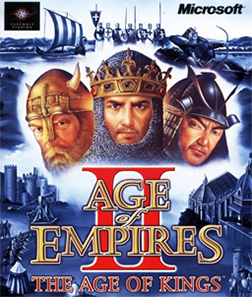
Age of Empires II: The Age of Kings is a real-time strategy video game developed by Ensemble Studios and published by Microsoft. Released in 1999 for Microsoft Windows and Macintosh in 2001, it is the second game in the Age of Empires series. The Age of Kings is set in the Middle Ages and contains thirteen playable civilizations. Players aim to gather resources, which they use to build towns, create armies, and defeat their enemies. There are five historically based campaigns, which conscript the player to specialized and story-backed conditions, as well as three additional single-player game modes; multiplayer is also supported.
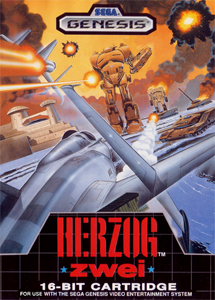
Herzog Zwei is a real-time strategy video game developed by Technosoft and published by Sega for the Mega Drive/Genesis. An early real-time strategy game, it predates the genre-popularizing Dune II. It was released first in Japan in 1989 and worldwide in 1990. It is the sequel to Herzog, which was available on the Japanese MSX and PC-8801 personal computers.

Star Wars: Empire at War is a 2006 real-time strategy video game developed by Petroglyph Games and published by LucasArts for Microsoft Windows and Mac OS X. Set between Episode III and Episode IV, it focuses on the fledgling struggle between the Empire and the Rebels. It uses Petroglyph's game engine Alamo. In October 2006, an expansion titled Star Wars: Empire at War: Forces of Corruption was released. On May 31, 2014, online functionality, including network multiplayer and wireless chat, was discontinued after Glu Mobile's purchase of GameSpy and the subsequent shutdown of all game servers. As of September 1, 2017, the multiplayer has been re-enabled on the Steam version with Workshop support added.

Stronghold is a historical real-time strategy video game developed by Firefly Studios and published in 2001 by Gathering of Developers for Microsoft Windows and Mac OS X. The game focuses primarily on conquest and expansion through military pursuits but also has prominent economic and infrastructure development elements. There is both an economic and a military campaign to be played and both are discussed in the game manual. In the English version, the game takes place in Medieval Britain around the year 1066; however, since there is not always a time limit, scenarios can continue hundreds of years beyond that date.
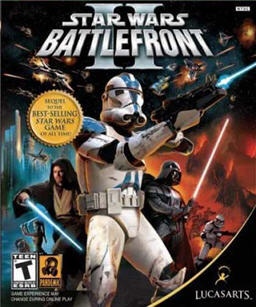
Star Wars: Battlefront II is a 2005 first and third-person shooter video game based on the Star Wars film franchise. Developed by Pandemic Studios and published by LucasArts, it is a sequel to 2004's Star Wars: Battlefront and the second installment in the Star Wars: Battlefront series. The game was released in PAL regions on October 28, 2005, on the PlayStation 2, PlayStation Portable (PSP), Microsoft Windows, and Xbox platforms, and in North America on November 1 of the same year. It was released on the PlayStation Store on October 20, 2009, for download on the PSP. The PSP version was developed by Savage Entertainment.
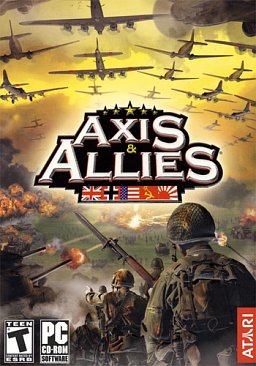
Axis & Allies is a real-time strategy World War II video game developed by TimeGate Studios and published by Atari for Microsoft Windows. The game was released on November 2, 2004. It is based on the board game series Axis & Allies from Milton Bradley and also on TimeGate's Kohan series. Set in the years after Japan and the United States entered into the war, the game allows the player to act as a World War II commander to build military forces to fight against other generals, using military units and technologies from the war. The player is able to rewrite and recreate the history of World War II.

Company of Heroes is a 2006 real-time strategy video game developed by Relic Entertainment and published by THQ for Windows and OS X operating systems. It is the first installment of the Company of Heroes series, and was the first title to make use of the Games for Windows label.

Rise and Fall: Civilizations at War is a real-time strategy video game developed by both Stainless Steel Studios and Midway Games which was released in June 2006. The game incorporates segments of both third-person and first-person shooter gameplay, by allowing the player to temporarily control a "hero". Rise and Fall is based in the first millennium BC, and features four playable civilizations: Persia, Greece, Egypt, and Rome. The game includes over eighty civilization-unique military units, as well as eight "hero" units—of which only one may be purchased during a game. In Rise and Fall, there are two campaigns: one follows the conquests of Alexander the Great; and the other, the fictional liberation of Egypt by Cleopatra.

Age of Empires: The Age of Kings is a turn-based strategy video game developed by Backbone Entertainment and published by Majesco Entertainment for the Nintendo DS handheld video game console. It is a spin-off of Microsoft's Age of Empires series.

The Settlers: Heritage of Kings, released as Heritage of Kings: The Settlers in North America, is a real-time strategy video game developed by Blue Byte and published by Ubisoft. Released in Germany for Microsoft Windows in November 2004, and in the United Kingdom, North America, and Australia in February 2005, it is the fifth game in The Settlers series. In 2005, Blue Byte released two expansions, The Settlers: Heritage of Kings - Expansion Disc and The Settlers: Heritage of Kings - Legends Expansion Disc, in March and September respectively, featuring new single-player campaign missions, new maps for both single-player and multiplayer modes, a map editor, and a random map generator. In November, The Settlers: Heritage of Kings - Gold Edition was released, containing the original game and the first expansion. In 2009, the original game was also released on GOG.com. In 2018, the game was re-released as The Settlers: Heritage of Kings - History Edition.

Tzar: The Burden of the Crown, also known as simply Tzar, is a real-time strategy game for Microsoft Windows published by TalonSoft and developed by the Bulgarian game developer company Haemimont Games. It received average reviews from critics.

Imperivm: Great Battles of Rome is a 2004 real-time strategy video game for Microsoft Windows. It is a sequel to the RTS/RPGs Celtic Kings: Rage of War and Imperivm II: The Punic Wars. The game, released in 2004, was developed by Haemimont Games together with FX Interactive. It was re-released on Steam on August 16, 2021.
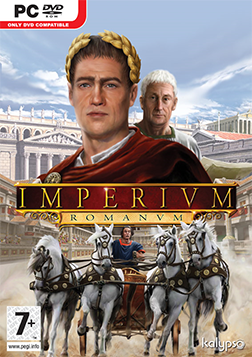
Imperium Romanum is a 2008 city-building video game for Windows developed by Haemimont Games and published by Kalypso Media. Imperium Romanum is a sequel to the 2006 game Glory of the Roman Empire, by the same developer. Players act as governor of a Roman province and must build and maintain a thriving and prosperous settlement. The game takes place during the time of the Roman Empire. Players build Roman towers, gates, and bridges and use currency to fund projects. The Italian and Spanish versions of the game are titled Imperivm: Civitas II.

Grand Ages: Rome is a 2009 city-building and real-time strategy game developed by Haemimont Games and published by Kalypso Media. It is the sequel to 2008's Imperium Romanum. The Italian and Spanish versions of the game are titled as Imperivm: Civitas III. A sequel, Grand Ages: Medieval, was released on September 25, 2015.

Tropico 3 is a video game developed by Haemimont Games and published by Kalypso Media. Like the previous games in the series, Tropico 3 is a construction and management simulation as well as a political simulation game, with emphasis on city building. As a thematic sequel to Tropico, the game attempts to return to the roots of the series, which puts the player into the shoes of "El Presidente" – a ruler governing over an island banana republic.

The Witcher 2: Assassins of Kings is a 2011 action role-playing video game developed by CD Projekt Red, based on The Witcher series of fantasy novels by Andrzej Sapkowski. It is the sequel to the 2007 game The Witcher and the second main installment in The Witcher's video game series. It was released for Microsoft Windows, Xbox 360, OS X, and Linux.

Halo Wars 2 is a real-time strategy video game developed by 343 Industries and Creative Assembly. It was published by Microsoft Studios and released in February 2017 on Windows and Xbox One. The game is set in the science fiction universe of the Halo franchise in 2559. It is a sequel to Halo Wars (2009). The story follows the crew of Spirit of Fire, a United Nations Space Command (UNSC) ship. Spirit of Fire arrives at the Ark, a Forerunner installation responsible for constructing and remotely controlling the titular Halo rings. Conflict breaks out between the UNSC forces and an alien faction known as the Banished over control of the Ark.

Nemesis of the Roman Empire is a real-time strategy role-playing video game developed by Haemimont Games and published by Enlight Software. The sequel to Celtic Kings: Rage of War, the game is set in the Punic Wars and allows the player to take control of one of four nations, as well as Hannibal the Great.


















